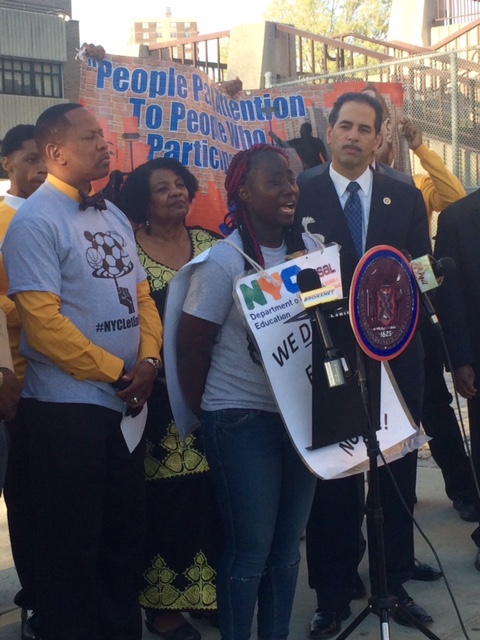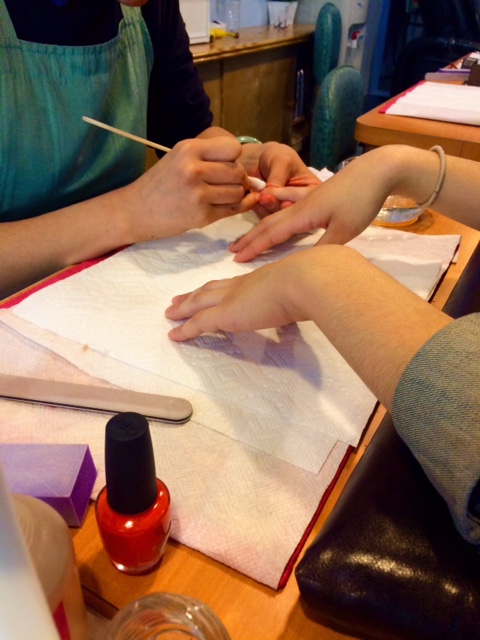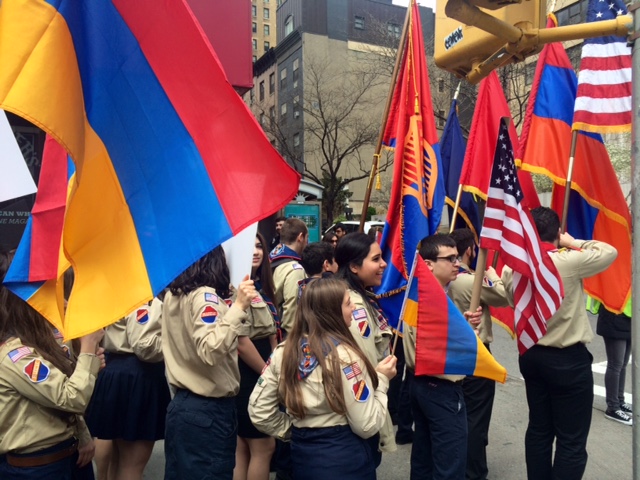Originally published on May 8, 2015.
Host Intro: Over the last 12 years, large, struggling public high schools were shut down in New York City. Over 100 new, smaller schools opened in their place.
This created a gap for smaller schools to form sports programs through the Department of Education. Critics say that it disproportionately affects Black and Latino students.
Now, some of the students at small schools are fighting back. Charlotte Gibson reports.
___________________
It’s Wednesday night around 10pm and the Eagles – a team of high school students from the Lower East Side are playing soccer against the Tri-Boros – a group of men in their 20s and 30s.
SOCCER GAME AMBI: Soccer ball dribbling and whistle blowing
It’s the Gotham City amateur men’s league. And tonight’s match is special. It’s the last league match of the season. The 11 players on the field all work together – moving the ball around from player to player. Coach El Hadji Diope yells in Wolof from the sidelines. Many of his players are from his native country Senegal.
SOCCER GAME SOUND: Coach yelling from sideline
Alex Salas plays for the Tri-Boros. He says this is the first time his team has played the Eagles.
ACTUALITY SALAS: “It’s great. Not so much because it can get a little physical because they are still young and they are still developing. They have a lot more ahead of them.” (00:08)
AMBI SOCCER CHEERING GOAL: Clapping and cheering over Eagles goal.
The team wins 3-0 finishing off their season: four wins, one loss, and one tie.
Coach Diope says win or lose the boys are just happy for the opportunity to play.
ACTUALITY DIOPE: “They get hyped. They love this game, you know. These are good kids, good students. It’s tough to be a student athlete but they enjoy it. For the love of the game.” (00:12)
Many of these players have been playing soccer since they could walk. For them, soccer is life.
The problem is that there are no sports teams available for these students at their high school.
Each year the city’s Department of Education distributes $24 million to Public School Athletic League or PSAL. And that funds sports at more than 400 public schools.
But smaller schools – including Manhattan Comprehensive High School where our soccer players attend – is TOO small to get money.
The principal and athletic director from their school scraped together almost $5,000 of their own money to let their students play soccer in an outside amateur league.
Mark Dorman is the athletic director at the high school.
ACTUALITY DORMAN: “They are denying the potential of all the kids throughout the city and that’s unfortunate.” (00:06)
Out of the 480 public high schools in the city, nearly 70 have no sports teams at all.
BRING UP SOUND OF PROTESTS: “Civil rights matter! Civil rights matter! Let them play! Let them play!”
A small group of students and administrators from some of these schools have been protesting every Wednesday evening in front of City Hall.
Hassanatou Samake is a old senior at International High School. She is one of the students that organizes the NYCLetEmPlay protests.
ACUTALITY HASSANATOU SAMAKE: “If we had sports, we will be playing in soccer field, baseball field or basketball field. But because we don’t have sports all we have left is to go every Wednesday at city Hall to protest. So they can hear us, so they can do something. So that next spring, we will be able to play.” (00:18)
ACTUALITY DAVID GARCIA-ROSEN: “Sports is a vital part of an education.” (00:03)
David Garcia-Rosen is the former dean of International High School in the Bronx – another school that lost its funding when it was downsized. He says there are so many students of color affected, it’s a violation of the Civil Rights Act of 1964.
ACTUALITY GARCIA-ROSEN: “Right now, next year, the schools with the white students are going to get a disproportionate amount of funding and access and Black and Latino students are going to get less access and less funding.” (00:10)
Four years ago, Garcia-Rosen tried to save the problem by starting the Small School Athletic League. That grassroots campaign was money pulled together with individual school budgets.
But, last May, the DOE gave more than $800,000 to the small league on the condition that it become apart of the longer PSAL. Garcia-Rosen says then nothing changed.
ACTUALITY GARCIA-ROSEN: “On the DOE level I think there is still denial. We tried very hard at discussion and negotiation. The DOE is paralyzed by institutionalized racism that they cannot shake.” (00:12)
The DOE did not respond to repeated requests. In previous statements, they said they’re working on it. Garcia-Rosen says not fast enough.
Last November he filed a complaint with the U.S. Department of Education.
In March, Garcia-Rosen was suspended for protests outside of City Hall with students.
Council Member Andy King is the Co-Chair of the Black Latino Asian Caucus. He says he’s ready to do more.
ACTUALITY KING: “I want us to take the politics out of it and do what’s right for these students and children that want to play high school sports.” (00:05)
Fatou Boy agrees. She is a 17-year-old junior from International High School. She says this lack of funding is nothing short of segregation.
ACTUALITY BOY: “So, not having a sport makes me really feel frustrated. Like what do we have to do as a student to get a sport, beside being white or going to a bigger school. What else can we do to get the sports?” (00:14)
The students say they will continue to fight until Mayor de Blasio and Chancellor Carmen Farina meet their demands.
Charlotte Gibson, Columbia Radio News.







